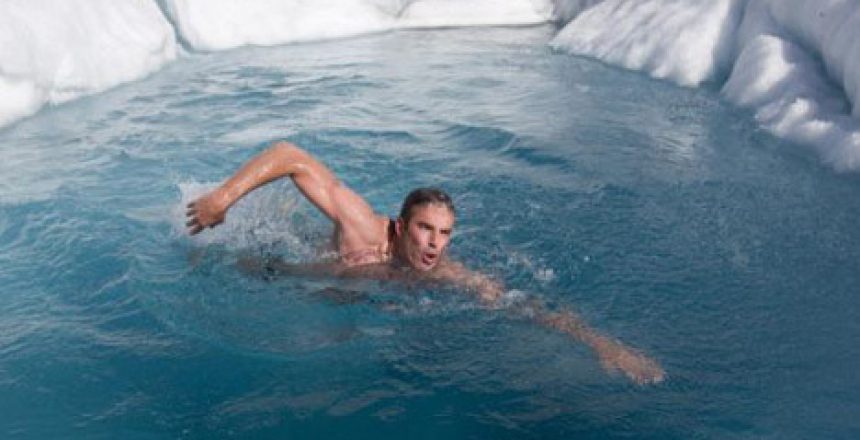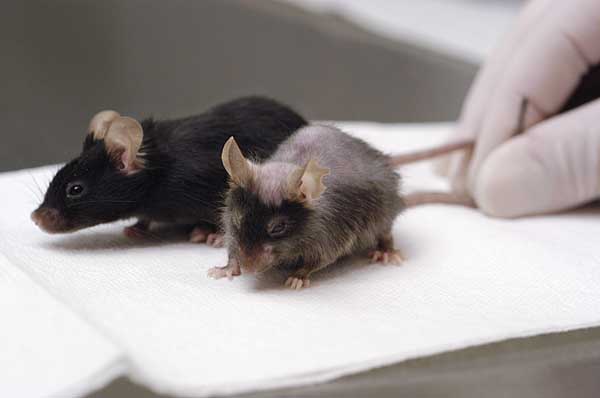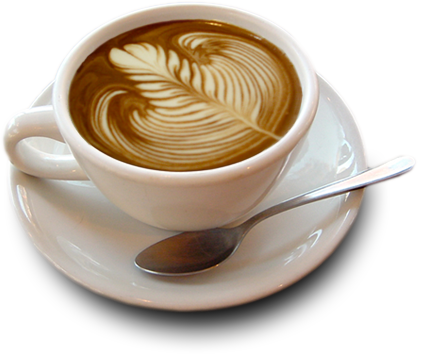Cold thermogenesis, or the generation of heat through exposure to cold, has become popular recently, or as popular as something like this can become. What’s the reality and how much is hype behind cold thermogenesis?
How cold thermogenesis works
Cold thermogenesis is the production of body heat during and after the body has been exposed to cold. The body must produce heat when exposed to cold, since all physiological and biochemical systems are designed to work at an optimal temperature, around 37° C. or 98.6° F.
In extreme cases, it’s a matter of survival.
There are two ways the body uses to increase the metabolic rate and produce heat: one is through the muscles and shivering, the other is through the activation of brown fat.
Brown fat is a metabolically active form of adipose (fat) tissue. The majority of fat tissue in adults is white adipose tissue, which is relatively metabolically inactive. Until recently, it was thought that only infants and children carry substantial amounts of brown fat, but it’s been discovered that adults have it as well.(1) Cold exposure activates brown fat.
In people who have brown fat, or enough of it to be detectable, cold exposure causes an increase in the metabolic rate.
Exposure to an air temperature of 19 C. (66 F.) while wearing light clothing (t-shirt and underwear) caused an approximately 30% rise in energy expenditure – basal rate was 1446 calories a day, and this increased by 410 calories. The BAT (brown adipose negative) group rise was only about 40 calories.
If this increased energy expenditure were to be repeated often enough, large amounts of calories would be burned. But to burn an extra 400 calories a day, presumably you’d have to sit in a cold room in your underwear 24 hours a day.
Water has a high heat capacity, higher than air, meaning that in cold exposure, water will make the body colder in less time than air. Cold water exposure is therefore a more efficient way to cool the body; it’s also more efficient at killing people at extreme temperatures than air. (Allegedly, a pilot who ditched in the North Sea during WW2 had only a minute or two to get out of the water before he died.)
So, what happens to people in cold water exposure? Immersion of the entire body, with head out, in water of 20 C. (68 F.) causes a near doubling (93%) in the metabolic rate. If that were continued over 24 hours, that might mean 1500 more calories burned.(2)
Exposure to cold water at 14 C. (57 F.) ramped up the metabolic rate by 350%, or 4.5 fold. That’s the equivalent of an extra 6750 calories daily, or around 280 calories an hour.
Cold showers
Cold showers have the potential to treat depression, chronic fatigue, and possibly even cancer, through their effects on the immune system. Cold showers will not be as effective as complete immersion in cold water for raising the metabolic rate, but they offer a reasonably good alternative.
I take a cold shower daily. I recently (November) measured the temperature of the water in my shower, and it was 66 F. (19 C.) That temperature feels cold enough when you first step into it, but you get used to it quickly and it soon feels normal. The temperature of shower water varies a good deal, depending on your local conditions, and could be much colder or warmer. My January water temperature is around 55 F. (13 C.)
We saw above that a one-hour exposure to air of about the same temperature as the water in my shower caused an approximate 30% increase in metabolic rate. Since water is more efficient than air in this respect, we might guess that 5 minutes in a cold shower would have the same effect. While this is guesswork, judging by my subjective experience, it’s in the ballpark.
Other than coffee, there’s nothing like a cold shower to get you going in the morning. They take you from that soft cocoon of warmth and sleepiness to ready to take on the day. But will they help you burn fat?
If my metabolic rate increases 30%, and that lasts an hour (which may be generous), then I burn an extra 21 calories through cold showering. So no, that’s not going to help me burn fat.
If I were to take a shower at a colder temperature, 57 F. (14 C.), and stay in for an hour, and the increase in metabolic rate lasted two hours (again, probably generous), then I might burn an extra 560 calories. Now we’re getting somewhere – but unless you do this daily, it’s not likely to make a lot of difference in calories burned.
Cold vs exercise
People seem to be interested in the topic of cold thermogenesis as a way to increase calories burned without actually doing anything. In other words, increase your metabolic rate and you’ll burn more fat just sitting there. But there are a couple of problems with this notion.
One is that exercise burns a lot more calories than any reasonably credible increase in metabolism through cold exposure.
The amount of energy expenditure through exercise is often measured in terms of metabolic equivalents, or METs. A MET is the increase in energy expenditure as a ratio of basal metabolic rate. Sitting quietly has a MET of 1.0. Brisk walking and tennis both have a MET of 5, jogging and cycling a MET of 10. Other high-intensity exercises have a yet greater effect, sprinting or jumping rope, for instance.
Even moderate exercise increases the metabolic rate quite a bit more than exposure to very cold water. If you wanted to burn more fat, you’d be better off going and playing tennis for an hour than you would taking a cold shower for the same length of time.
Furthermore, a game of tennis is bound to be more enjoyable.
The final objection to the notion of increasing metabolic rate to burn fat is the same as with exercise: it’s very easy to make up for what you have burned by eating more. Aerobic exercise has a poor record at fat loss, so poor in fact that most actual experts say it does next to nothing. (I discussed this extensively and cited relevant studies in my new book, Muscle Up.)
Increased metabolism has no advantage over exercise in this regard; it is not magic. If you don’t control your food intake, then nothing you do in the way of either exercise or increased metabolism will matter much for weight loss.
Like exercise, increasing the metabolic rate will have similar beneficial effects on health. But unfortunately, fat loss isn’t one of them.
Increasing brown adipose tissue (BAT)
As I discussed in my book, there is an exception to the rule that exercise doesn’t cause fat loss, and that is resistance training (strength training, weightlifting). The reason that this form of exercise works is because it builds muscle and reduces insulin resistance; muscle has a higher metabolic rate than fat tissue, and better insulin sensitivity allows for fat to be burned off more readily.
By increasing the amount of actively metabolic tissue (muscle), weightlifting causes more calories to be burned even at rest. Weightlifting has been shown to be much more effective for fat loss than aerobic exercise – albeit watching one’s food intake is still important.
Brown adipose tissue, as we saw above, burns more calories than white adipose tissue; BAT appears to be the main component of increased metabolic rate, short of shivering, which is a function of the muscles. Therefore if we increase the amount of BAT, this will, just like the addition of muscle, burn more calories around the clock. But can this be done?
There are some indications that it is possible to increase BAT. A group of people, aged 20 to 73, underwent cold exposure and were tested for the presence of BAT.(3) Among people in their 20s, more than half of them tested positive for BAT, but among people older than 60, that figure dropped to 10%. Furthermore, those who tested positive for BAT had a lower BMI, and less body and abdominal fat.
So there’s some indication not only that more BAT means less body fat, but that the incidence (and presumably, the amount) of BAT declines with age. If BAT declines with age, that means that certain measures may be able to combat the loss of BAT, just as certain measures can combat other aspects of aging.
Inactive or inefficient BAT is also seen in obesity.(4) So an increase in quality – likely meaning better mitochondrial function – may also mean less body fat.
Since cold exposure causes more BAT activity, it stands to reason that repeated cold exposure may increase the amount of BAT. Whether it actually does so is not known.
As for increasing BAT quality, anything that improves mitochondrial function should help. That includes exercise, and supplements like resveratrol and curcumin. A diet low in carbohydrates should help too.
Certain food ingredients and other supplements also activate BAT(5), including capsaicin, cinnamon, black pepper, and green tea catechins.
Conclusion
Certain figures in the world of biohacking have generated a lot of hype about cold thermogenesis, probably because it’s new and different and people are desperately seeking solutions for fat loss. As we’ve seen, cold thermogenesis isn’t a panacea by any means. It’s generated at the cost of quite a bit of discomfort, and whether it will truly result in fat loss, and how BAT may be related to the obesity epidemic, are all but unknown.
My take on this is that cold exposure, such as a cold shower, has decided benefits, just as exercise does. But if not combined with a decent diet then one should not expect fat-loss miracles.
(Article updated 11/26/2017.)















30 Comments
I always figured skinny people had more BAT because it’s harder for them to keep warm – fat people should keep their temperature up easier (more mass in relation to surface area).
Have you stumbled across cryotherapy in your research ? A session is usually 3 minutes at -110 degrees Celsius. Won’t burn that many more calories, but maybe it encourages WAT–>BAT conversion? Sounds mighty hormetic in any case.
Another interesting puzzle piece:
https://www.ncbi.nlm.nih.gov/m/pubmed/23804321/
Higher ambient temperature associated with lower body mass..
Cryotherapy at -110 degrees? No haven’t hear about that. Your link is a puzzle alright. Thanks.
They advertise it as -200 using liquid nitrogen, but it’s only for 3 minutes. Very popular with athletes, and I’ve tried it.
Instead of a cold shower, do a cold bath after your workout like professional athletes do for recovery (minus the ice, of course). You get the best of both worlds this way.
This may not be such a good idea after all. There were 2 studies released earlier this year that seemed to show that post-workout ice baths impair strength and muscle gain: https://suppversity.blogspot.com/2015/07/using-ice-cold-water-immersion-after.html
What I wonder is, does this apply to less extreme things like cold showers (with, say, 65 degree water)? Who knows?
Thanks, Joshua. Wow, that really blunted the gains. My feeling is that 65 degree water isn’t cold enough to do that, but as you say, who knows?
Okay, this is strange. The article here says it was published in Nov 2017. However, my comment (and several others) are apparently from Nov 2015! What’s going on?
I updated the article and republished it.
That hasn’t been my experience at all, but after the icy pool I jump in a hot tub for 10 minutes.
It may not be useful as far as losing weight, but there could be other interesting benefits. Mike Cernovich recently put Wim Hof on my radar screen. He uses breathing techniques that raise metabolism and also help to control the immune system.
This is a totally different topic, but as Wim Hof uses cold in order to achieve these things, it is related. Also interested from a life extension point of view but Hof is using these techniques not just as a neat party trick (“look! I can sit in ice water for two hours!”) but to actually stave off and prevent serious diseases including cancer.
I just watched the Vice documentary on Wim Hof and highly recommend it. I have bought Hof’s book and may also sign up for his video course too.
Wim is a super-interesting cat. If you read between the lines, it would appear he used cold therapy to cure himself of depression, and probably substance abuse as a means of self-medicating, too.
However, he has enough of a video trail on YouTube that, at least IMO, the years have not been kind to him. Bad genes? Or too much of a good thing, making it a bad thing? I don’t know.
Potential downside:
https://www.nydailynews.com/news/national/salon-manager-frozen-death-cryochamber-cops-article-1.2410197
May have been suicide…NBA players still swear by the cryochamber. I’ve tried it, and found it similar to swimming in an icy pool for ten minutes, which is a lot cheaper..
No, Never. Absolutely not. I loathe being cold whether in water or air. Give me a sauna or steamroom anytime. I love them. Even if it were guaranteed to add years to my life I would not do it. Being cold is like being dead while still alive. Indeed, at age 26 I moved away from snow and cold forever.
Virtually every comment you’ve made so far has been negative in the extreme. Change your tune or go elsewhere. We get it: you’re weak.
Could you please look into it:
https://www.degruyter.com/view/j/revneuro.2017.28.issue-8/revneuro-2017-0020/revneuro-2017-0020.xml
Agrees with a lot of what I’ve written about Alzheimer’s and Parkinson’s diseases.
Could it be that iron is there at the wrong place at the wrong time. And also, could excess iron is the result of the condition but not cause.
Raj, I’d suggest you read my book on iron, where all that is discussed.
I’ve been swimming a few laps in our unheated HOA pool (at top speed) every day for the last few months. The temperature now is around 60*…It ices my bruises from jiu jitsu and makes me feel better, apart from any calorie burning effects. But I have gradually been losing weight.
Let’s go take cold showers daily!
According to Scott Carney’s book on this, the trigger for increasing BAT is cold as perceived by the skin (rather than lower core body temperature). So people who go out for a run in the cold get the benefit (cold skin, leading to more BAT) without suffering the discomfort (because running generates enough heat to keep you warm, even at very chilly temperatures).
Interesting, maybe I could dig up a reference for that, because I haven’t seen that.
I was quickly able to find a reference that skin temperature mediates the activation of existing brown/beige adipose tissue: https://www.ncbi.nlm.nih.gov/pubmed/21407809?access_num=21407809 (It’s a pretty clever study, actually.)
Finding a reference that skin temperature is what mediates the recruitment of white adipose tissue to become beige turned out to be more difficult. Here’s a pretty good survey article though, with lots of references that might include some answers: https://www.ncbi.nlm.nih.gov/pubmed/26026310
Thanks, Philip. It also turns out that muscles are about 10 times more important than brown fat to the thermogenic response to cold.
My understanding of cold therapy is that it massively increases levels of norepinephrine, a natural anti-inflammatory, and that it generates cold shock proteins, which help with recovery, cell maintenance, and damage mitigation, especially in the synapses.
I’ve also read that the cold exposure can lead to the generation of higher levels of brown fat.